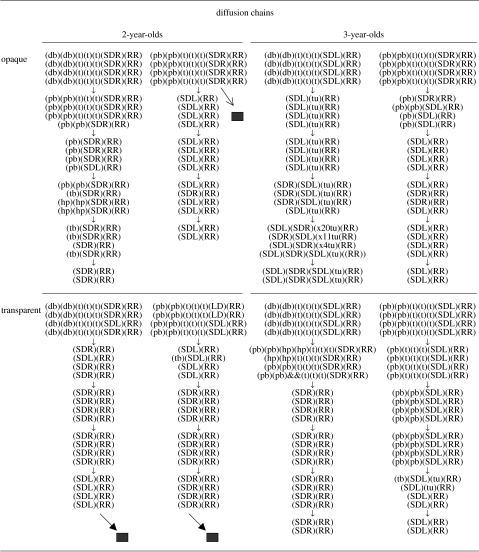Figure 2.
Transmission along diffusion chains. Each row of seven bracketed symbols represents a child's attempt on a GCB. The upper two rows of each set of four are attempts and the lower two rows are demonstrations: (db) represents dragging the bolts, (pb) represents pushing the bolts, (hp) represents poking and pulling the bolts with one's hand, (tb) refers to children who touched the bolts but did not move them, (t) represents tapping into the upper compartment (the initial demonstrator did this three times, only the first three taps are illustrated although some children made more), (LD) represents lifting the door open, (SDL) or (SDR) represent sliding the door open either towards the left or right, (tu) refers to children who used the tool rather than their hand to move the door, sometimes children moved the door more than once (e.g. ×20 means moving the door 20 times) and (RR) represents retrieving the reward. A symbol that does not appear means that the behaviour it represents was not produced during that attempt. A black rectangle to the side of a chain represents a child who was allocated to a chain but did not participate in the chain. Actions represented with uppercase letters are causally necessary actions, while actions represented with lowercase letters were not causally necessary.

